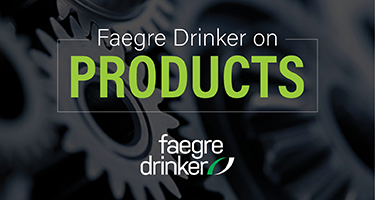Telemedicine and telehealth have significantly reshaped how consumers access health care services. Even before the COVID-19 pandemic, online portals were jockeying to replace visits to primary care providers and urgent care clinics for minor illnesses or simple-to-prescribe medications. The last two years shifted that race into high gear, particularly with new products and platforms being introduced that range from virtual clinic platforms that allow patients—and their programmable implanted medical devices—to connect with their providers from the comfort of their own homes, to passive smart devices that remotely monitor patient vital signs, analyze that data using proprietary algorithms, and evaluate whether a patient is having a medical emergency or needs to schedule an appointment with their provider. These technologies are now so ubiquitous that they are being showcased at the 2022 Consumer Electronics Show.
To be sure, regulatory changes in response to the COVID-19 pandemic made telemedicine more permissible—and reimbursable—than in the past. But that alone is not driving medical device companies forward. Instead, medical device manufacturers are rapidly developing smart or algorithm-driven medical devices that take advantage of the ever-increasing power of those technologies and leveraging telemedicine to make the remote treatment and management of medical conditions less complicated. A recent article in Nature’s npj Digital Medicine confirmed the growth in this area, counting 64 separate smart- or algorithm-driven medical devices currently on the market as of 2020. See Stan Benjamens, et al., The State of Artificial Intelligence-Based FDA-Approved Medical Devices and Algorithms: An Online Database, 3 npj Digital Medicine Article No. 118 (2020). Each of these new devices endeavor to enable physicians to practice more effectively and efficiently than they could before. The future for smart or algorithm-driven medical devices looks promising.
That future will almost certainly open treatment doors, but it will also almost certainly open new doors to a new litigation landscape. While many of the claims will be familiar—design or manufacturing defect, failure to warn, breach of warranty—the specific issues to be litigated and the proof required may be markedly different.
First, it is likely that litigation will more prominently feature physicians. As smart or algorithm-driven medical devices give physicians new tools to practice more effectively, plaintiffs will more than likely bring medical malpractice claims, arguing the physician misused the tool, did not fully understand how it worked or should be used, failed to recognize signs that the device was not working properly, or even should not have used the tool in the first place. In so doing, they may be able to avoid the costs of proving the smart or algorithm-driven medical device was defective, and may be able to continue to leverage state-law medical malpractice claims to avoid federal court.
Indeed, proving that a smart or algorithm-driven medical device is defective is likely to be a significant undertaking. Litigation will not be limited to establishing whether a physical defect existed which rendered the device dangerous. It will almost undoubtedly raise questions about whether the specific software at the heart of the device’s smart or learning capabilities failed to perform as expected, an issue which undoubtedly requires additional expert testimony.
Second, the complexity of smart or algorithm-driven medical devices are also likely to drive more failure to warn claims and, to the extent user error is an issue, call into question the role of the learned intermediary. Manufacturers will need to be mindful of anticipated FDA guidance on labeling for smart or algorithm driven devices. Importantly, the evidence necessary to support failure to warn claims overlaps in part with medical malpractice claims, making it even more likely that medical malpractice claims will be more frequently joined with products liability claims.
As with any medical device, the applicable regulatory pathway may present its own set of challenges. If FDA requires a pre-market approval, the time to market and initial investment are high, but the doctrine of preemption offers some protection in litigation. If the pathway is a 510(k), then manufacturers can be assured that the well-worn tension between Riegel and FDA’s guidance on the role of safety and efficacy in every 510(k) determination will figure prominently in any courthouse battle. Whatever the pathway, the road ahead for these devices has yet to be charted, but is sure to be exciting.
The material contained in this communication is informational, general in nature and does not constitute legal advice. The material contained in this communication should not be relied upon or used without consulting a lawyer to consider your specific circumstances. This communication was published on the date specified and may not include any changes in the topics, laws, rules or regulations covered. Receipt of this communication does not establish an attorney-client relationship. In some jurisdictions, this communication may be considered attorney advertising.

